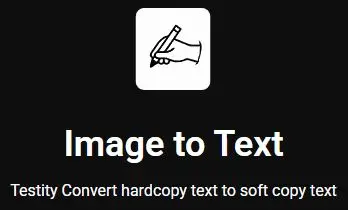Generative AI Explained : Rapidly advanced in recent years, revolutionizing how we create content and solve problemskdnuggets.comw3schools.com. Tools powered by large language models (LLMs) like ChatGPT (GPT-4), DALL·E, and Midjourney can now produce human-like text, realistic images, and even computer code, enabling content creators, video editors, and web developers to work faster and more creativelykdnuggets.comw3schools.com.
Unlike traditional AI that classifies or predicts data, generative AI focuses on generating new content (text, images, audio, video, 3D models) by analyzing existing data and user promptskdnuggets.comw3schools.com. This self-study guide provides a structured roadmap for beginners and professionals alike to learn the fundamentals, master AI tools, and build practical projects that showcase generative AI skills.
What Is Generative AI?
Generative AI is a branch of artificial intelligence that creates new content rather than simply analyzing existing datakdnuggets.comw3schools.com. It relies on advanced models—often called foundation models—which are large neural networks trained on massive datasetskdnuggets.com. For example, GPT-4 (a large language model) can write poetry or code without being explicitly taught those tasks, and image models like DALL·E can combine concepts in novel ways (e.g. “a robot painting a sunset in the style of Van Gogh”)kdnuggets.com.
In practice, generative AI systems take user input (prompts) and produce outputs: text, images, audio, video, or even 3D models, drawing on patterns learned from their training datakdnuggets.comw3schools.com. Foundation models such as GPT-4, Claude, and Google’s Gemini demonstrate this creativity and fluency across tasks like writing, reasoning, and codingkdnuggets.comkdnuggets.com.
Before diving into generative AI, it helps to have some foundational knowledge. Core prerequisites include:
Python Programming: Python is the de-facto language for AI development. Familiarity with Python and libraries like TensorFlow, PyTorch, NumPy, and Pandas is essentialkdnuggets.comigmguru.com. Practice writing scripts and simple web services (using Flask or FastAPI) to learn how to call AI model APIs and process their outputs.
Machine Learning Basics: Understand fundamental ML concepts, including supervised vs. unsupervised learning, model evaluation, overfitting, and key algorithms (e.g. regression, decision trees, clustering)kdnuggets.comigmguru.com. You won’t train huge models from scratch, but knowing how models learn and generalize will improve how you design systems and promptskdnuggets.com.
Probability & Statistics: Generative models rely on probability. Concepts like probability distributions, sampling, and statistics help you interpret model outputs and measure uncertaintykdnuggets.com.
APIs and Dev Tools: Most generative AI work uses pre-trained models via web APIskdnuggets.comkdnuggets.com. Learn to use HTTP requests, handle JSON data, and manage API tokens (to estimate usage cost). Familiarity with basics of Linux and cloud services can also be helpful.
By covering these prerequisites, you’ll be ready to effectively use and understand generative AI tools without needing to build algorithms from scratchkdnuggets.comkdnuggets.com.
Working with Foundation Models
Modern generative AI development centers on foundation models—very large neural networks accessible via APIs kdnuggets.com . This means you often don’t train models yourself, but leverage existing ones. For example:
Large Language Models (LLMs): GPT-4, Claude, and Gemini excel at language tasks. They can answer questions, summarize text, write code, or produce structured datakdnuggets.com. For instance, GPT-4 can analyze code snippets or solve math problems as easily as writing creative textkdnuggets.com.
Image Models: Tools like DALL·E, Midjourney, and Stable Diffusion generate images from text prompts. They enable content creators to quickly create illustrations, storyboards, or concept art from simple descriptions.
Other Modalities: There are also models for audio, video, and 3D (e.g. DreamFusion for 3D modeling, Runway ML for video editing). These tools let video editors, designers, and multimedia artists experiment with generative content.
Using APIs for these models has advantages: you get access to cutting-edge capabilities without managing infrastructurekdnuggets.com. However, be aware of cost: many APIs charge by usage (e.g. per token). Learning to optimize prompts and model choice can reduce costkdnuggets.com. When building applications, plan to cache frequent requests, use smaller models for simple tasks, and monitor usage so you stay efficientkdnuggets.com.
Effective Prompt Engineering
One of the most important skills in generative AI is prompt engineering: crafting the input that tells the model what to do. Well-designed prompts lead to useful, coherent outputs, while vague prompts can produce irrelevant or harmful results kdnuggets.com w3schools.com. In fact, prompting is simply “the way we ask an AI to do something” w3schools.com
. Key tips include:
Be Clear and Specific: State exactly what you want. Instead of a generic request, include details and context. For example, rather than “Write a story,” ask “Write a short story in a humorous style about a friendly AI assistant.”
Provide Structure: If you need output in a certain format (like a list, table, or code snippet), mention it in the prompt.
Use Examples: Demonstrate the task with a brief example in the prompt. Models often mimic patterns shown in the input, so examples guide them.
Iterate: Prompt engineering is iterative. Test different prompts, refine them based on the output, and experiment with the model’s parameters (like temperature).
Mastering prompts transforms generative AI from a novelty into a powerful toolkdnuggets.com. In practice, you will experiment a lot: write a prompt, evaluate the output, adjust phrasing or length, and try again. Over time, you’ll learn what works best for each task and model.
Your Generative AI explained
To systematically build your generative AI skills, follow these steps:
Understand Machine Learning Fundamentals: Review core ML concepts (supervised vs. unsupervised learning, model evaluation, basic algorithms). Topics to explore include linear/logistic regression, clustering (k-means), decision trees, etc.igmguru.com. This background will help you grasp how modern models work under the hood.
Master Python Programming: Since most AI tools use Python, gain proficiency in itigmguru.comkdnuggets.com. Practice coding in Python, and learn popular libraries (e.g. TensorFlow, PyTorch, Pandas, NumPy). Build small scripts that call web APIs (using
requestsorhttpx) so you get comfortable integrating AI services.Dive into Data Science & Deep Learning: Learn data preprocessing, visualization, and feature engineering. Study deep learning fundamentals like neural networks, and explore architectures (CNNs, RNNs, Transformers)igmguru.com. Free online courses or tutorials on TensorFlow/PyTorch can guide you through these topics.
Explore Generative AI Models and Tools: Experiment with existing generative AI platforms. Try ChatGPT or Claude for text generation, and use tools like DALL·E or Stable Diffusion for image creation. Explore the Hugging Face model hub to run models locally. Reading documentation for these tools will deepen your understanding of what’s possible.
Work on Hands-On Projects: Put theory into practice with projectskdnuggets.comigmguru.com. For example, build a simple chatbot (using GPT API), an AI image gallery (using DALL·E or Stable Diffusion), or a content generator (that uses AI to draft articles or code). Hands-on projects reinforce learning and give you tangible results to show. As KDnuggets notes, practical projects demonstrate your capabilities to potential employers or clientskdnuggets.com.
Collaborate and Network: Engage with the AI community. Join forums, participate in hackathons or open-source projects, and collaborate on GitHub. Discussing ideas with peers and staying up-to-date on new models will accelerate your learning. Community involvement is often overlooked but highly valuable for keeping abreast of the latest advancementsigmguru.com.
Following these steps builds a strong, practical foundation. You’ll learn the core concepts and then immediately apply them by experimenting and building, which is key to mastering generative AIkdnuggets.comigmguru.com.
Generative AI Across Different Roles
Content Creators & Marketers: Writers and designers use AI to speed up content production. For instance, ChatGPT can draft blog posts, social media captions, or ad copy, while image generators (DALL·E/Midjourney) create graphics or concept art. AI tools allow creators to brainstorm ideas or automate repetitive writing tasks.
Video Editors & Designers: New AI video tools (like Runway ML or Adobe Firefly Video) can generate clips from text prompts, automate editing, and apply creative styles. AI assists video editors by generating storyboards, suggesting cuts, or even creating short animated sequences, greatly reducing manual workload.
Developers & Data Scientists: Programmers leverage AI (e.g. GitHub Copilot, Tabnine) to auto-complete code, find bugs, or write documentation. Data scientists use AI to generate synthetic data, summarize insights, or prototype features faster. Understanding generative AI enables developers to integrate chatbots, virtual assistants, or recommendation systems into applications.
Students & Learners: Beginners can use generative AI as a study aide – for example, by asking it to summarize lecture notes, explain complex concepts in simple terms, or generate practice problems. Since many tools have user-friendly interfaces, novices can explore AI without needing deep technical skills.
Office Professionals & Freelancers: AI can automate routine tasks like drafting emails, creating reports, or analyzing spreadsheets. According to Salesforce research, 61% of workers already use or plan to use generative AI, and 75% of AI users aim to automate tasks at worksalesforce.comsalesforce.com. For example, a freelancer might use AI to quickly generate a proposal draft, or a marketer might use it to generate customer email copy.
General Users & Innovators: Anyone can experiment with AI for creativity or personal projects. From building an AI-powered game to automating home projects, generative AI opens up new possibilities for personal innovation.
These examples illustrate that generative AI is not just for experts: it’s transforming work and creativity across fields. The rapid adoption (e.g. 70% of Gen Z workers now use AIsalesforce.com) shows its broad appeal. By learning these skills, you’re preparing to leverage the same tools shaping many industries.
Staying Responsible and Looking Ahead
Generative AI is powerful, but it’s also evolving quickly. Always review AI outputs carefully: models can produce plausible-sounding but incorrect or biased results. Use human judgment to verify critical information. Follow best practices for privacy and safety, such as not feeding sensitive data into public models.
Looking forward, generative AI is set to keep growing in importance. Experts project the AI market to expand at ~31% CAGR, reaching about $152 billion by 2032igmguru.com. By following a structured roadmap and continuously practicing, you’ll be well-positioned to take advantage of this trend. The field changes rapidly, so make learning a habit – engage with communities, read recent research, and keep experimenting with new models and techniques.




